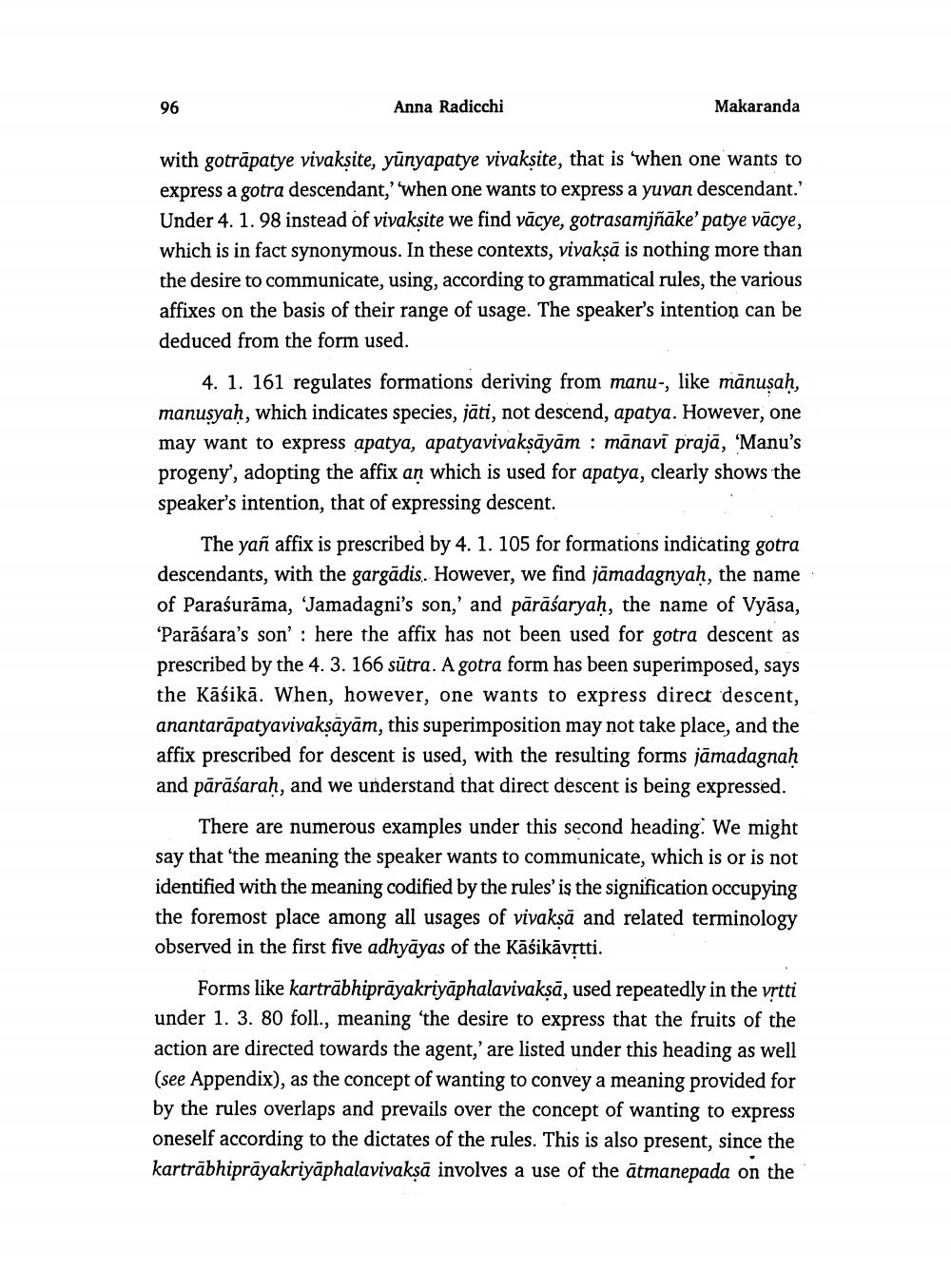________________
96
Anna Radicchi
Makaranda
with gotrāpatye vivaksite, yūnyapatye vivakṣite, that is when one wants to express a gotra descendant,' when one wants to express a yuvan descendant.' Under 4. 1.98 instead of vivaksite we find vācye, gotrasamjñāke' patye vācye, which is in fact synonymous. In these contexts, vivakşā is nothing more than the desire to communicate, using, according to grammatical rules, the various affixes on the basis of their range of usage. The speaker's intention can be deduced from the form used.
4. 1. 161 regulates formations deriving from manu-, like mānusah, manusyah, which indicates species, jāti, not descend, apatya. However, one may want to express apatya, apatyavivaksāyām : manavi prajä, 'Manu's progeny', adopting the affix an which is used for apatya, clearly shows the speaker's intention, that of expressing descent.
The yañ affix is prescribed by 4. 1. 105 for formations indicating gotra descendants, with the gargādis. However, we find jāmadagnyah, the name of Paraśurāma, 'Jamadagni's son,' and pārāśaryaḥ, the name of Vyāsa, ‘Parāśara's son' : here the affix has not been used for gotra descent as prescribed by the 4. 3. 166 sūtra. A gotra form has been superimposed, says the Kāśikā. When, however, one wants to express direct descent, anantarāpatyavivaksāyām, this superimposition may not take place, and the affix prescribed for descent is used, with the resulting forms jāmadagnah and pārāśarah, and we understand that direct descent is being expressed.
There are numerous examples under this second heading: We might say that 'the meaning the speaker wants to communicate, which is or is not identified with the meaning codified by the rules' is the signification occupying the foremost place among all usages of vivakṣā and related terminology observed in the first five adhyāyas of the Kāśikāvịtti.
Forms like kartrābhiprāyakriyāphalavivaksā, used repeatedly in the vrtti under 1. 3. 80 foll., meaning 'the desire to express that the fruits of the action are directed towards the agent,' are listed under this heading as well (see Appendix), as the concept of wanting to convey a meaning provided for by the rules overlaps and prevails over the concept of wanting to express oneself according to the dictates of the rules. This is also present, since the kartrābhiprāyakriyāphalavivaksā involves a use of the ātmanepada on the




